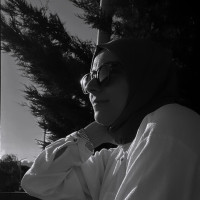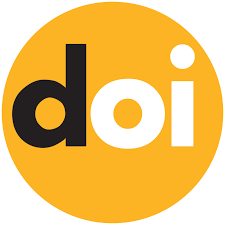Research Articles
Issue Reviewers








Aim & Scope
Goal:
International Journal of Human and Art Studies (IJHAR) has adopted the principles of researching and keeping the culture alive, primarily in line with the laws and reforms of Mustafa Kemal Atatürk. For this reason, adhering to the "Intangible Cultural Heritage" list in line with the decisions made by UNESCO in 2003,
To follow folklore, art, and cultural heritage studies globally, publish research on these subjects, and carry studies in this field to the international level.
For these purposes, IJHAR broadcasts in Turkish and English.
Content:
Original articles based on research that will fill a gap in their field,
Promotional and criticism articles that will contribute to the development of the field
Translations, short reports, and information that will contribute theoretically and methodologically to social culture, folklore, ethnology, anthropology, nature and ecology, visual arts, literature, sociology, psychology, marbling art, calligraphy, decorative arts, and cultural heritage studies brief reports and short communications,
Compilations from the field or written sources.
The articles to be published in IJHAR are required not to be published anywhere else, be in the referee process of other journals, or be refused. Papers presented at a scientific meeting cannot be published in IJHAR if the full text is published in the proceedings booklet. Up to two articles by an author can be published in the same year.
Among the journal's priority topics are protecting 15 Turkish cultures (http://www.kulturvarliklari.gov.tr/TR,44423/dunya-miras-listesi.html) in the UNESCO World Heritage List and protecting the UNESCO Convention by Articles 16, 17 and 18. Included in the Intangible Cultural Heritage List:
Representative List of the Intangible Cultural Heritage of Humanity
List of Intangible Cultural Heritage Requiring Urgent Protection
It is a List of Best Practice Examples.
For this purpose, it publishes cultural studies based on research, analysis, and compilation, including folklore, ethnology and anthropology, nature and ecology, visual arts, local art and cultural heritage issues, and all kinds of theory and method problems in Turkey and other countries.
https://www.ijhar.net/resources/images/IJHAR-Article-Template.docxhttps://www.ijhar.net/resources/images/IJHAR-Article-Template.docx
Writing Rules
Valuation of Incoming Articles:
Blind Referee Type
The International Journal of Human and Art Studies (Ijhar) uses the double-blind method in all studies' evaluation processes. In the double-blind method, the author and referee identities of the studies are hidden.
Initial Evaluation Process
The editors evaluate the works sent to the International Journal of Humanities and Art Researches. At this stage, studies that do not comply with the journal's purpose and scope are weak regarding language and expression rules in Turkish and English, contain scientifically critical errors, have no original value, and do not meet publication policies. The iThenticate similarity rate is generally 20%, exceeding 3% from the same source studies that are rejected. The rejected works are returned to their authors, along with their justifications. Articles deemed appropriate are reviewed by the chief editor for preliminary evaluation. Author names of the articles found appropriate are hidden and sent to the responsible editor of the relevant field. Next, the articles are sent to two referees who have accepted their works and works in the area for scientific evaluation in line with the opinion of the field editor members. Referees can also be selected from the editors. The article is sent to a third referee if one referee's report is positive and the other is negative. Two positive referee reports and domain editor approval are required to publish the article. The authors must consider the criticism, suggestions, and correction requests of the referees and editors of the field. The author may submit the referees' criticism to the Editorial Board and their reasons.
For articles that have completed their refereeing processes and have been decided to publish, the "published" information is announced through the IJHAR official website article system. However, the number of publications depends on the journal's editors and publishing principles.
Basic Writing Rules:
IJHAR has taken important decisions and changed the spelling rules since 2021.
Articles will be written directly into the article template, which can be downloaded here or from the Article Template tab. The template is prepared according to the journal rules. Modification or non-compliance is not recommended. You can delete headings that don't interest you in the article template or add subheadings without breaking the format.
Ijhar assigns a DOI number to each article. For this reason, an extended summary of 700-1000 words to be added under the articles is requested. Detailed information is in the article template.
Writing Rules for the Article Template:
Extended Turkish Abstract
Texts written in English should include an extended summary in Turkish. The abstract should not contain subheadings. However, the introduction, theoretical framework, purpose/research questions, general findings, discussion/conclusion, and recommendations/application sections should be summarized in separate paragraphs. The summary should include the purpose of the study, method, data collection tools, and research findings. Calibri should be 9 points in size, justified, and at least 700-1000 words long. Paragraphs should not be indented, and six spaces between paragraphs should exist.
Anahtar Sözcükler: En az 3, en fazla 8 sözcük olmalıdır.
English Abstract
Texts written in English must have an English summary of 250-350 words in length. Attention should be drawn to the study and its importance in the first sentence of the summary. The lack of a relevant study topic in the literature should be emphasized in the second sentence. Then, the purpose of the study, data collection method, analysis method, significant findings obtained, and finally, the study's contributions to the literature and practice should be stated. The abstract should be in Calibri font, 9-point size, and justified.
Keywords: Must be at least three and at most eight words.
Introduction
In this section, the study's importance and the literature's deficiencies should be stated, the differentiating aspect of the subject from existing studies should be expressed, and then the purpose of the study should be emphasized. Then, the main outlines of the study should be emphasized to the reader by expressing the outlines of the rest of the study.
Article text, Calibri font, 11 points, Normal, Justified, Paragraph Left and Right Indent 0cm, Line Spacing 1.15 Times, Pre-Paragraph 0nk, Post-Paragraph 6nk space, First Line of the Paragraph 1.25cm inside (MS Word "First Line" type paragraph).
Citing References in the Text
The APA Writing Guide 7th Edition Rules should cite references in the text. Below are some situations and examples. If a source other than these is to be cited, APA Publication Guide 7th Edition Rules should be taken as a basis.
When citing the source in the text in both quotations and rewrites, the SURNAME, DATE OF PUBLICATION, and PAGE NUMBER of the cited publication owner can be specified in two different ways.
1. The author's surname, the publication date of the research, and the page number are included in the text. If the author's surname is part of the sentence, the year and page number of the source are given in parentheses.
Example:
Kessler (2003, p. 12) found that early-onset social anxiety disorder is resistant to treatment.
2. After completing the sentence, the author's surname, year, and page number are shown in parentheses, separated by commas.
Example:
One study showed that major depressive disorder has a high rate of comorbidity with substance abuse and substance dependence (Kessler, 2003, p. 12).
For single-author references,
(Author surname, year, p., no), Example: (Aksel, 2024, p.1)
About two authors;
(Author surname and Author surname, publication year, p., no), Example: (Baştürk and Özdemir, 2024, p. 25)
For Submissions with more than two Authors,
(Author Surname, et al., 2024, p. 2), Example: (Erdal et al., 2024, p. 2)
In consecutive page references with direct quotes
(Author surname, year of publication, number of pages), example, (İnce, 2017, pp. 294-295)
Heading Formatting:
Headings should not be labeled with numbers or letters.
First Level Heading, Centered, Bold
The text starts as a new paragraph. The text starts as a new paragraph. The text starts as a new paragraph.
Second Level Heading, Left Aligned, Bold
The text starts as a new paragraph. The text starts as a new paragraph. The text starts as a new paragraph.
Third Level Heading, Left Aligned, Italic, Bold
The text starts as a new paragraph. The text starts as a new paragraph. The text starts as a new paragraph.
Fourth Level Heading, 1.25 cm Indented, Bold, Ends in Period. The text starts on the same line and continues as a paragraph.
Fifth Level Heading, 1.25 cm Indented, Bold, Ends in Period. The text starts on the same line and continues as a paragraph.
Aim
The purpose/problem of the research should be clearly stated. Sub-objectives, sub-problems, or research hypotheses, if any, should be presented.
Article text, Calibri font, 11 points, Normal, Justified, Paragraph Left and Right Indent 0cm, Line Spacing 1.15 Times, Pre-Paragraph 0nk, Post-Paragraph 6nk space, First Line of the Paragraph 1.25cm inside (MS Word “ First Line” type paragraph).
Method
While explaining the method for quantitative research,
The purpose of the study, population, sample, sampling method, data collection method, time of data collection, scales used, analysis method, programs used, etc. Issues such as these should be explained.
Similarly, for qualitative research,
The purpose of the study, the selected qualitative research methodology, the data collection method, the participants, the time of data collection, the method of classification and analysis of the data the programs used, etc. Issues such as these should be explained.
These are examples, and the method section should be detailed depending on the nature of the study.
Research Group (Level 2 Title)
Article text, Calibri font, 11 points, Normal, Justified, Paragraph Left and Right Indent 0cm, Line Spacing 1.15 Times, Pre-Paragraph 0nk, Post-Paragraph 6nk space, First Line of the Paragraph 1.25cm inside (MS Word “ First Line” type paragraph).
Data Collection Process (Level 2 Title)
Article text, Calibri font, 11 points, average, justified, paragraph left and right indent 0 cm, line spacing 1.15, 0 pt space before paragraph, 6 pt space after, the first line of the paragraph should start 1.25 cm in.
Data Collection Tools (Level 3 Title)
Article text, Calibri font, 11 points, average, justified, paragraph left and right indent 0 cm, line spacing 1.15, 0 pt space before paragraph, 6 pt space after, the first line of the paragraph should start 1.25 cm in.
Direct quotation text, Calibri, 11 points, italic, justified, paragraph indented 1cm from the right and 1cm from the left, first line 1.25 cm indented, 0pt space before the paragraph and 6pt space after the paragraph, line spacing 1.15.
Analysis of Data (Level 2 Heading)
Calibri font, 11 points, average, justified, paragraph left and right indent 0 cm, line spacing 1.15, 0 nk space before the paragraph, 6 pt space after it, the first line of the paragraph should start 1.25 cm in.
Results
Findings obtained: It should be explained with relevant tables, figures, graphs, or pictures in a way that supports the research problem and preserves its integrity.
Article text, Calibri font, 11 points, Normal, Justified, Paragraph Left and Right Indent 0cm, Line Spacing 1.15 Times, Pre-Paragraph 0nk, Post-Paragraph 6nk space, First Line of the Paragraph 1.25cm inside (MS Word “ First Line” type paragraph).
First Title of the Findings (Level 2 Title)
Article text, Calibri font, 11 points, average, justified, paragraph left and right indent 0 cm, line spacing 1.15, 0 pt space before paragraph, 6 pt space after, the first line of the paragraph should start 1.25 cm in.
Table captions, headings, and text should be in Calibri font, 11 points, italic (italic). Table, figure, and picture captions and numbers should be bold.
Table 1. Table titles and text 11 point font, table text and number bold
xxxxxxxxxxx Frekans (f) Percentile (%)
xxxxxxxxxxx ? ?
xxxxxxxxxxx ? ?
xxxxxxxxxxx ? ?
Toplam ??? ???
First Subheading of the Findings (Level 3 Heading)
Article text, Calibri font, 11 points, normal, justified, paragraph left and right indent 0 cm, line spacing 1.15, 0 pt space before paragraph, 6 pt space after, the first line of the paragraph should start 1.25 cm in.
Picture 1. This is a caption. (Captions and text must be 9 points and italic; caption and number must be bold and italic.) Images must be in CMYK format with a resolution of 300 dpi.
Result and Discussion
The findings should be discussed by considering the literature (citing where relevant) and including author comments. Tables, pictures, figures, etc., should not be in the conclusion section.
Article text, Calibri font, 11 points, normal, justified, paragraph left and right indent 0 cm, line spacing 1.15, 0 pt space before paragraph, 6 pt space after, the first line of the paragraph should start 1.25 cm in. Grafik 1. Bu bir şekil yazısıdır. (Şekil başlıkları ve metin 9 punto, şekil yazısı ve numarası kalın).
Graph 1. This is a figure caption. (Figure titles and text 9 points, figure text and number bold).
Source:* If a graphic is cited, source information should be given below the graphic.
References
References should be given according to APA 7th edition rules. Below are some sample representations. Works such as newspapers, magazines, encyclopedias, anthologies, novels, plays and films, short stories and poetry books, stories, articles, book chapters, letters, conferences, speeches, interviews and personal interviews, and unpublished theses must be submitted according to APA 7th edition rules.
All sources cited in the text should also be included in the bibliography. Similarly, all sources in the bibliography must be cited in the text.
It should be written alphabetically according to the authors' surnames at the end of the source article text.
Article or Periodical Sources
Periodical sources should have a Calibri font, 11 points, average, justified, paragraph left and right indent of 0 cm, line spacing of 1.15, 0 pt space before paragraph, and 6 pt space after.
Unlike the standard text of IJHAR, the first line of the paragraph should be aligned to the left, and the following lines should start 1.25 cm in (MS Word Hanging paragraph). The name of the periodical must be in italics.
In publications with more than one author, the & sign should be used before the last author's surname in Turkish articles and other languages.
A periodical source with a single author:
Author's surname, initials of the author's name. (Year). Name of the article. Name of the Periodical, Volume (Number of the Periodicals), Page range. DOI Address.
Example:
Bilge, H. (2022). Examination of Turkish Teacher Candidates' Alphabet and Spelling Knowledge. International Journal of Human and Art Studies, 7 (4), 349-361. https://doi.org/10.5281/zenodo.7394230
Multi-authored periodical source:
First author's surname, initials., Second author's surname, initials. and Third author's surname, initials., (Year). Name of the article. Name of the Periodical, Volume (Number of the Periodicals), Page range.
Example:
Türk Kaya, S., Onan, C. and Uzunoğlu, M. (2022). Alternative Searches and Application Examples in Collography Technique. International Journal of Human and Art Studies, 7(4), 388-414. https://doi.org/10.5281/zenodo.7415685
Grady, J. S., Her, M., Moreno, G., Perez, C., & Yelinek, J. (2019). Emotions in storybooks: A comparison of storybooks representing ethnic and racial groups in the United States. Psychology of Popular Media Culture, 8(3), 207–217. https://doi.org/10.1037/ppm0000185
Books
Periodical sources should have a Calibri font, 11 points, regular, justified, paragraph left and right indent of 0 cm, line spacing of 1.15, 0 pt space before paragraph, and 6 pt space after.
Unlike the standard text of IJHAR, the first line of the paragraph should be aligned to the left, and the following lines should start 1.25 cm in (MS Word Hanging paragraph). The book's name must be italicized.
In books with more than one Author, the & sign should be used before the last Author's surname in Turkish articles and other languages.
Book with a single author:
Author's surname, initials of the Author's name. (Year). Name of the book (Print Number). Publisher. DOI Address.
Example:
Sapolsky, R. M. (2017). Behavior: Human biology at its best and worst. Penguin Books.
Jackson, L. M. (2019). The psychology of prejudice: From attitudes to social action (2nd ed.). American Psychological Association. https://doi.org/10.1037/0000168-000
Book with multiple authors:
Author's surname, Author's initials., Author's surname, Author's initials. And the author's surname and initials. (Year). Name of the book (Print Number). Publisher.
Example:
Ahıska, M. and Yenal, Z. (2006). The Person We Are Calling Cannot Be Reached Now, Lifestyle Representations in Turkey 1980-2005. Ottoman Bank Archive and Research Center.
Wolfe, J. M., Kluender, K. R., Dennis, L. M., Bartoshuk, L. M., Herz, R. S., Lederman, S. J. & Merfeld, D. M. (2015). Sensation & perception (4th ed.). Sunderland, MA: Sinauer Associates.
Book Chapter:
Author's surname, initials of the Author's name. and Author's surname, Author's initials. (Year). Name of the book chapter. Name of the book (Print number) in (Volume, Page range). Publisher.
Edited Book:
First editor's surname, First editor's initials. And the second editor's surname And initials. (Ed.). (Year). Name of the book (Print number). Publisher.
Example:
Savaşir, I. and Şahin, N. H. (Ed.). (1997). Assessment in cognitive-behavioral therapies: Frequently used scales. Turkish Psychologists Association Publications.
Papers Published as Books:
Author's surname, initials of the Author's name. (Year). Name of the paper. Initials of the editor's name. Editor's surname (Ed.), Name of the Scientific Meeting (page range). Place of the meeting: Publishing House.
Example:
Eyim, A. (2006). A sociological perspective on the place and importance of scientific freedom and administrative autonomy in the structure of universities. R. Yıldız (Ed.), II. Social Sciences Education Congress (52-64). Van Yüzüncü Yıl University.Bedenel, A. L., Jourdan, L., & Biernacki, C. (2019). Probability estimation by an adapted genetic algorithm in web insurance. In R. Battiti, M. Brunato, I. Kotsireas, & P. Pardalos (Eds.), Lecture notes in computer science: Vol. 11353. Learning and intelligent optimization (pp. 225-240). Springer. https://doi.org/10.1007/978-3-030-05348-2_21
Theses:
Author's surname, initials of the author's name. (Year). Title of the thesis [Master's thesis / doctoral thesis, University name]. Internet address or database.
Example:
Karadağ, E. (2009). Thematic and methodological examination of doctoral theses written in the field of educational sciences in Turkey: A case study [Doctoral Thesis, Marmara University]. Higher Education Council National Thesis Center. (Thesis No: 250896).
Scientific Meeting and Symposium:
Author's surname, initials of the author's name. (Year month). Name of the oral presentation. [Verbal statement]. Name of the Scientific Meeting, City where the meeting took place. URL link if available.
Example:
Cengiz, Ö. Y. (2015, May). Change in therapist, client and therapy relationship: A schema therapy case report [Verbal report]. VII. Işık Savaşir Clinical Psychology Symposium, Ankara.
Texts in Online Environment
Regarding reliability, those with author, title, and publication date should be preferred when citing online texts as sources.
Newspaper Article:
Author's surname, initials of the author's name. (Full Release Date). Name of the article. Name of the newspaper. Internet address.
Example:
Öcal, H. (21 September 2023). It is no longer accessible for Armenians to dance. Nationality. https://www.milliyet.com.tr/yazarlar/hakki-ocal/ermeniler-icin-raks-etmek-artik-kolay-degil-7008480
Video:
Publisher's surname, initials of Publisher's name. (Full Release Date). The title of the Video is [Video]. Full Internet address
Example:
Bellofolletti. (2009, April 8). Ghost caught on surveillance camera [Video]. http://www.youtube.com/watch?v=Dq1ms2JhYBI&feature=related
Podcast:
Publisher's surname, initials of Publisher's name. (Full Release Date). Release name [Video]. Full Internet address
Example:
Yeniçeri, Z. (2012, October 19). Superstitions and critical thinking [Audio File]. https://itunes.apple.com/tr/podcast/bat-inanclar-ve-elestirel/id438059426?i=122769979&mt=2
Meraji, S. M., & Demby, G. (Hosts). (2016–present). Code switch [Audio podcast]. National Public Radio. https://www.npr.org/podcasts/510312/codeswitch
Museum Artifact:
Artist's surname, Artist's initials. (Year). Work name. [Type: Painting, Sculpture, etc.]. Museum Name, City where the Museum is located, Country where the Museum is located. URL link if available.
Example:
Van Gogh, V. (1889). Starry night [Image]. Museum of Modern Art, New York, NY, United States. https://www.moma.org/learn/moma_learning/vincent-van-gogh-the-starry-night-1889/
Exhibition:
Artist's surname, Artist's first initial., and Artist's surname, Artist's first initial (Year). Exhibition name. [Exhibition]. The city where it is exhibited, the Country where it is exhibited. URL link if available.
Example:
Martinez, J.-L. and Douar, F. (2018–2019). Archeology goes graphic [Exhibition]. Louvre, Paris, France. https://www.louvre.fr/en/expositions/archaeology-goes-graphic
Ethics Committee Decisions (If Necessary)
In line with the decisions taken by ULAKBİM TR Index, Ethics Committee Permission is required for studies to be published starting from 2020.
https://trdizin.gov.tr/kriterler/
Whether or not ethics committee approval is required for your article, the IJHAR Ethics Committee Approval Certificate must be filled out.
https://www.ijhar.net/resources/images/Etik%20Kurul%20Onay%C4%B1.pdf
Declaration of Researchers' Contribution Rate (If there is more than one Author)
While all authors are expected to contribute during a multi-author article's planning and analysis phase, contribution rates may vary during the writing and implementation phase. The author contribution rate is determined by the responsible Author so that the total of all authors does not exceed 100%.
Sample Contribution Rate Distribution:
First Author 50%,
Second Author 25%,
The third Author contributed 20%, and others contributed 5% (Must be 100%).
Thank You (If Necessary)
Organizations and individuals who supported and contributed to the study can be thanked in this section.
Conflict Declaration
It should be stated whether material or moral benefit has been provided or not at any stage of the article.
Statement of Publication Ethics
All rules specified within the scope of the "Higher Education Institutions Scientific Research and Publication Ethics Directive" have been complied with throughout the entire process, from planning to implementation of this article, data collection, and data analysis. None of the actions mentioned under "Actions Contrary to Scientific Research and Publication Ethics," the second part of the directive, have been carried out. Scientific, ethical, and citation rules were followed during the writing process of this research. There was no tampering with the data collected. This study has not been sent to any other academic publishing environment for evaluation.
Ethical Principles and Publication Policy
ETHICAL RESPONSIBILITIES AND POLICIES
Publication Ethics Statement: All parties involved in the publishing process (authors, editorial board, and referees) must decide by ethical behavior standards. The International Journal of Peer-Reviewed Human and Artistic Studies has developed international standards for all parties to guarantee high ethical standards. The International Refereed Journal of Human and Artistic Studies expects all parties to abide by these standards. The best broadcasting ethics standards are supported, and all possible precautions are taken against publication malpractices. As the publisher of the International Refereed Journal of Human and Art Studies, it takes its duty of guardianship at all stages of publishing very seriously and accepts its ethical and other responsibilities.
International Standards for Authors
All authors applying to the International Journal of Human and Art Studies must voluntarily comply with international standards (ethical principles determined by the Publication Ethics Committee (COPE). https://publicationethics.org).
Authors must confirm that their manuscripts are original works. Plagiarism, fabrication, forgery, duplicate publication, data production… it is against international publication ethics.
Authors should not cause physical or legal harm to research participants and should not engage in psychological abuse. In addition, authors should guarantee privacy and anonymity to those who participate in their research.
Authors should identify the persons or institutions (sponsors) that support the research.
Authors must confirm that the article has not been previously published and is not currently being considered for publication elsewhere.
Authors should include all sources used in creating their manuscripts in the reference list.
When an author notices a material error or inaccuracy in his published work, he must immediately notify the editor or publisher of the International Journal of Human and Artistic Studies and cooperate with the editor to retract or correct the article.
Authors should report any conflict of interest to the International Journal of Human and Art Studies.
International Standards for the Editorial Board
The editor and editorial board members of the International Journal of Human and Art Studies are expected to voluntarily comply with international standards (ethical principles set by the Publication Ethics Committee (COPE). https://publicationethics.org/).
The Editorial Board should keep the information regarding all submitted manuscripts confidential.
The editorial board is responsible for making publication decisions for submitted articles.
The Editorial Board should strive to meet the needs of readers and authors.
The Editorial Board should strive to improve the quality of the International Journal of Human and Art Studies quality.
The Editorial Board should attach utmost importance to scientific quality and originality.
The Editorial Board should always be ready to issue corrections, clarifications, retractions, and apologies when necessary.
The editorial board prevents the same author from publishing twice a year. He tells the author that he can save the article for the next year or withdraw the article.
International Standards for Judges
Referees are required to comply with international standards after accepting the invitation to arbitrate. The International Journal of Human and Art Studies referees are expected to voluntarily comply with international standards (ethical principles determined by the Publication Ethics Committee (COPE). https://publicationethics.org/).
The referees should keep the information about the manuscript confidential.
Reviewers should bring to the attention of the Editorial Board all information that may be grounds for rejecting the article's publication.
The referees should evaluate the articles in terms of scientificity.
Reviewers should objectively evaluate manuscripts only based on their originality, importance, and relevance to the journal field.
Reviewers are independent of the authors. The author or those working in the same institution as the authors cannot act as referees.
Reviewers must notify the International Journal of Human and Artistic Studies of any conflict of interest.
The International Journal of Human and Art Studies checks all manuscripts for plagiarism using the iThenticate or Turnitin tool. Authors should strictly avoid plagiarism. The International Journal of Human and Art Studies does not publish articles with results exceeding 20% of the similarity report. International
Articles submitted to the Journal of Human and Art Studies must be original and not be published or submitted for publication elsewhere.
Editors thoroughly check submitted articles to identify the publication of articles and prevent misconduct. If research is identified as malicious, the corresponding author is responsible for the retraction or correction of the manuscript according to the feedback of the editor and the referees.
Approval Policy
The author or authors must comply with ethical and legal standards, and the following conditions must be communicated to the research participants:
Participants in your research should be informed that research will be conducted on them.
Participants in your research should be informed that participation is voluntary, there is no penalty for refusing to participate, and participants can withdraw at any time without penalty.
Participants in your research should be informed about the purpose of your research and the procedure you will follow.
Participants in your research should be informed about the contact information they can reach you for answers to questions about the research.
Participants in your research should be notified of any risks or inconveniences that may affect them if they agree to cooperate.
Participants in your research should be informed of the possible direct benefits of participation (for example, obtaining a copy of the article or chapter).
Participants in your research should be informed about how their privacy will be protected.
Studies that require the approval of the Ethics Committee are as follows.
Questionnaire,
interview,
focus group work
observation,
All kinds of research are conducted with qualitative or quantitative approaches that require data collection from the participants using experiment and interview techniques.
Use of humans and animals (including material/data) for experimental or other scientific purposes,
Clinical studies on humans,
Animal studies,
To the personal data protection law, retrospective studies require an ETHICS COMMITTEE REPORT or PERMISSION.
Moreover;
Stating that an "informed consent form" was taken in case reports,
Obtaining and specifying permission from the owners for the use of scales, questionnaires, photographs belonging to others,
It is MANDATORY to state that copyright regulations are complied with for the intellectual and artistic works used.
Price Policy
Ücretsizidir




International Journal of Human and Art Studies İJHAR; Licensed under the Creative Commons Attribution 4.0 International License.
International Journal of Human and Art Studies IJHAR has been registered with the decision of the Turkish Patent and Trademark Office, numbered 71248886-2020/24446 / E.2020-OE-458377.


